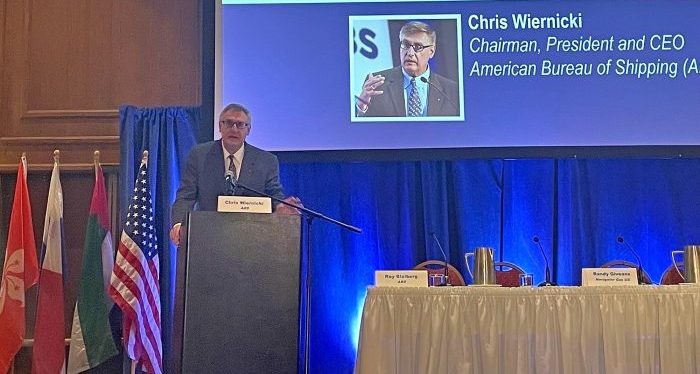The decisive role of public-private partnerships in delivering net zero for shipping by 2050 was spotlighted by Christopher J. Wiernicki, ABS Chairman, President and CEO.
According to Mr. Wiernicki, shipping is “clearly in the early innings of a decade of change. For shipping, the challenge and opportunity lies in two stories: shipping for shipping, which is the decarbonization of our industry, and shipping for the world, highlighting shipping’s pivotal role as an enabler of the global green energy transition.”
Green shipping corridors and clean energy marine hubs unite these two great shipping stories and offer us a clear pathway to 2050. However, we need regulatory clarity and consistency. It is not just about the tank-to-wake vs well-to-wake issue. It is also very much about the port to ship issue since port inefficiency will directly impact ship efficiency in terms of CO2 emissions
ABS’s CEO also added that in order to understand shipping’s role in the transition, the sector must appreciate how it will be the enabler and transport vehicle to bring the next generation of clean fuels to market.
“An excellent example of this in action is the emerging liquid CO2 carrier market. By connecting producers to consumers, shipping will be the cornerstone on which all related supply chains will be built,” Mr. Wiernicki believes.
He further added that “shipping for the world really gets highlighted when you stretch the green corridors and connect them with the clean energy marine hubs.”
Mr. Wiernicki’s address followed publication of ABS’s “Green Shipping Corridors -Leveraging Synergies” document, which explores green corridors and their critical contribution to the landscape of maritime decarbonization while highlighting the connection with energy hubs.
Specifically, the document sets out how green shipping corridors will help the industry determine the right balance between managing risks and achieving business success.
Green shipping corridors and clean energy marine hubs are interconnectors. They bring all of the pieces of the decarbonization puzzle together, including point to point trading and spot trading, and address the challenges of a diverse, disaggregated and globally regulated industry with carefully calibrated ecosystems designed to deliver success at scale and pace
Mr. Wiernicki concluded.




